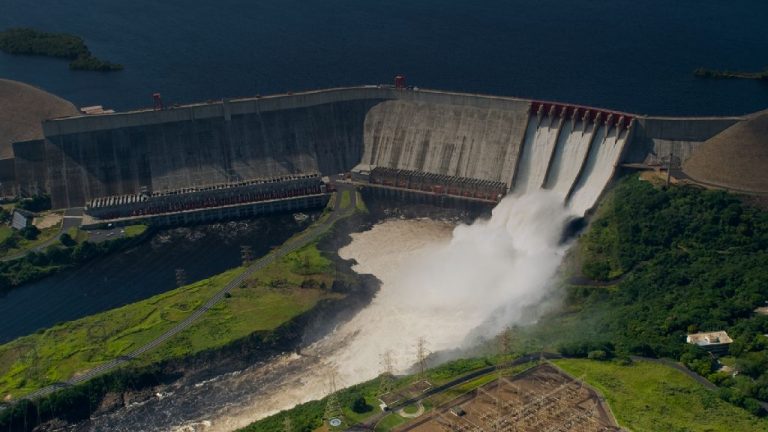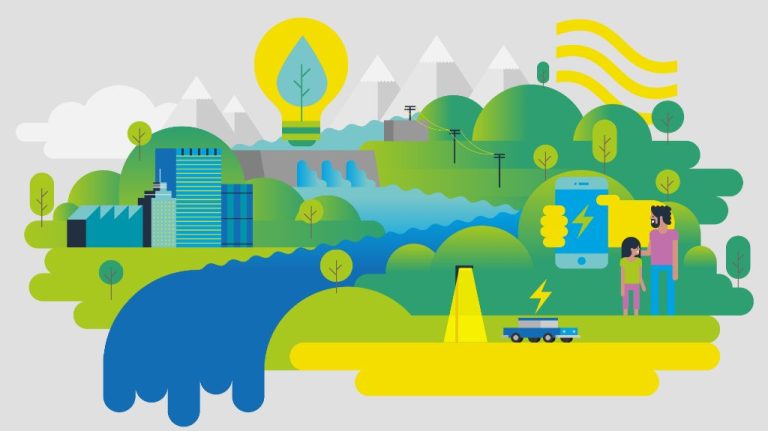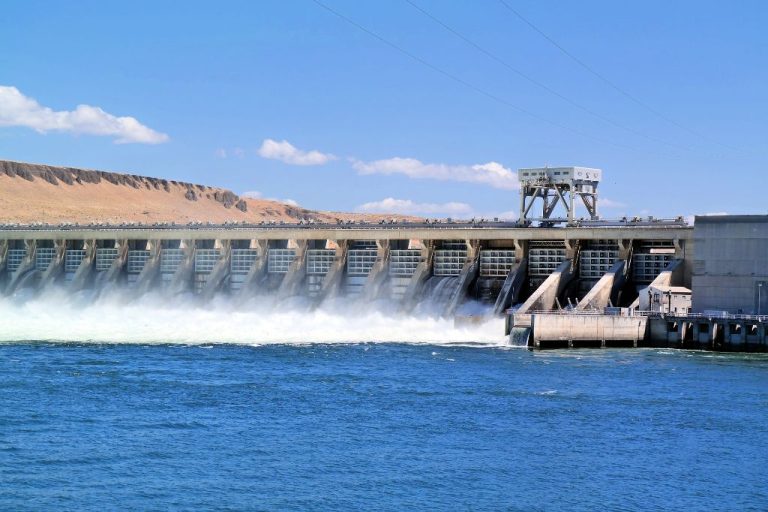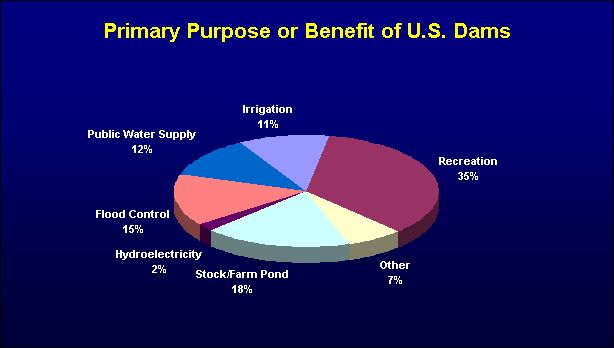Does Hydroelectricity Contribute To The Greenhouse Effect?
Hydroelectric power is one of the leading renewable energy sources worldwide. It currently provides around 16% of the world’s electricity. Hydroelectric dams convert the energy of flowing water into electricity by passing it through large turbines. This process does not directly burn fossil fuels, so it does not produce greenhouse gas emissions like carbon dioxide and methane.
However, there has been some debate about whether hydroelectric dams contribute indirectly to the greenhouse effect. The greenhouse effect is the trapping of heat in the Earth’s atmosphere due to increased levels of greenhouse gases like carbon dioxide and methane. These gases absorb infrared radiation and prevent it from escaping into space, causing a warming effect. The greenhouse effect is the main driver of human-caused climate change.
This article examines the evidence on whether hydroelectricity contributes significantly to the greenhouse effect through methane emissions from reservoirs, lifecycle carbon emissions, and other factors. Overall, it aims to determine if hydroelectricity should be considered a clean, renewable energy source in terms of global warming impacts.
How Hydroelectricity Works
Hydroelectric power plants generate electricity by harnessing the power of flowing water. A dam is constructed to form a large reservoir, which controls the flow of water. When the water is released from the reservoir, it flows through turbines, causing them to spin. The spinning turbines turn electromagnets that generate electricity.
The water flows through pipes called penstocks before reaching the turbines. After passing through the turbines, the water reenters the river downstream from the dam. The amount of electricity that can be generated depends on both the volume of water flow and the height from which it falls.
Hydroelectric power has several key benefits:
- It is a renewable energy source, since water can be used to generate electricity indefinitely.
- It is reliable, because reservoirs provide a steady, controlled flow of water.
- Operating costs are low compared to other energy sources like fossil fuels.
Overall, hydroelectricity is a clean, renewable, and reliable way to generate electricity by harnessing the power of moving water.
Greenhouse Gases Explained
Greenhouse gases are gases in the atmosphere that absorb and emit radiant energy. This process traps heat in the atmosphere, causing the greenhouse effect that leads to global warming.
The major greenhouse gases are:
- Carbon dioxide (CO2)
- Methane (CH4)
- Nitrous oxide (N2O)
- Fluorinated gases such as hydrofluorocarbons (HFCs)
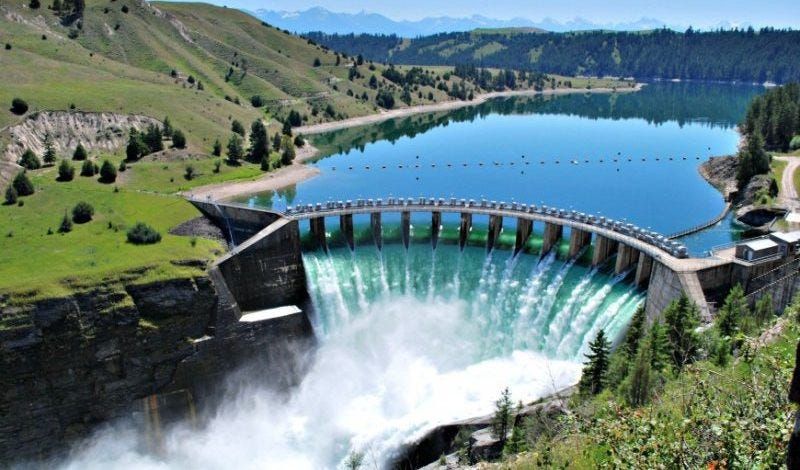
Of these, CO2 and methane make up the largest share of greenhouse gas emissions from human activities. When sunlight reaches the Earth’s surface, some of it radiates back towards space as infrared radiation. Greenhouse gases absorb this infrared radiation and trap the heat in the atmosphere. More greenhouse gases means more heat gets trapped, causing the planet’s overall temperature to rise over time.
Without naturally occurring greenhouse gases, the Earth’s average temperature would be very cold, around 0°F. But excessive greenhouse gas emissions from human activities like burning fossil fuels have amplified the greenhouse effect and caused the global temperature to increase at an accelerated rate since pre-industrial times.
Hydroelectricity’s Impact on Greenhouse Gases
Hydroelectric reservoirs emit greenhouse gases, primarily carbon dioxide and methane, due to the decay of flooded vegetation and organic matter. When an area is flooded to create a reservoir, terrestrial vegetation that previously consumed carbon dioxide through photosynthesis begins to decay underwater without oxygen. This anaerobic decomposition results in the release of methane, which has a global warming potential 25 times greater than carbon dioxide. Research suggests that hydroelectric reservoirs, especially those located in tropical regions, can emit significantly more greenhouse gases per unit of electricity than fossil fuel power plants.
One comprehensive study found that hydroelectric reservoirs globally contribute approximately 1.3% of manmade greenhouse gas emissions. However, most of these emissions occur within the first 10 years after reservoir creation and gradually decline over time. After 10 years, hydroelectricity typically has much lower lifecycle emissions than fossil fuel alternatives. While hydroelectric reservoirs release greenhouse gases upfront, they prevent the continuous release of emissions from the burning of fossil fuels over decades of operation. Overall, hydroelectricity remains one of the lowest emission renewable energy sources.
Methane Emissions From Reservoirs
One of the ways hydroelectric dams contribute to greenhouse gas emissions is through methane released from the reservoirs. When areas are flooded to create reservoirs, large amounts of biomass like vegetation and soil organic matter become submerged. Underwater, this biomass undergoes anaerobic decay, which releases methane into the atmosphere.
The amount of methane produced depends on factors like the size of the reservoir and its location. Larger reservoirs in tropical regions tend to produce more methane because they flood more biomass. Reservoirs in northern climates produce less methane since colder temperatures slow decay. There are some mitigation strategies like clearing vegetation before flooding or building dams in gorges instead of valleys. However, methane emissions can’t be fully prevented.
Carbon Emissions From Reservoirs
Flooding land to create reservoirs converts carbon sinks into carbon sources. The vegetation that once stored carbon gets flooded and begins decaying, releasing carbon dioxide and methane into the atmosphere.
However, most lifecycle analyses find that the magnitude of reservoir emissions is significantly lower than emissions from equivalent fossil fuel power plants. For example, one study found reservoir emissions from a Brazilian hydroelectric dam were <2% of a comparable natural gas plant over 100 years.
The amount of emissions depends on how much vegetation was cleared before flooding. Reservoirs purposefully cleared of vegetation before flooding have lower lifecycle emissions. On the other hand, reservoirs flooded without clearing produce more emissions from decaying organic matter.
Lifecycle Emissions Analysis
When considering the greenhouse gas impact of hydroelectricity, it’s important to look at emissions over the full lifecycle of a project. This includes the construction, operation, and decommissioning of a dam and reservoir. Though hydroelectricity itself does not burn fossil fuels, there are still greenhouse gas emissions associated with the concrete, steel, and energy used to build and run hydroelectric plants.
Overall, lifecycle analyses show that hydroelectricity has far lower emissions than fossil fuel power plants. One study found that hydroelectricity emits between 15 to 70 times less greenhouse gases per kilowatt-hour compared to coal or natural gas plants. This is because once built, hydro plants emit minimal greenhouse gases during operation.
However, emissions from reservoirs can offset some of these gains. Reservoirs convert carbon stored in plants and soil into methane and CO2. One estimate suggests reservoirs globally emit around 100 million metric tons of CO2 equivalent per year. Though substantial, this remains lower than lifecycle emissions from fossil fuel alternatives.
With proper site selection and management, hydroelectricity can play a key role in reducing greenhouse gas emissions from electricity generation. But reservoir emissions must be minimized to fully realize these benefits.
Hydro Compared to Other Renewables
When evaluating the greenhouse gas emissions of hydroelectricity, it’s useful to compare it to other renewable energy sources like solar, wind, and geothermal. Each has its own unique carbon footprint and environmental tradeoffs.
Solar and wind are praised as having very low lifecycle carbon emissions, but they face intermittency challenges since the sun doesn’t always shine and the wind doesn’t always blow. Large-scale energy storage solutions are still costly and not widely deployed. Hydroelectricity can play an important role in complementing solar and wind power by providing reliable baseload and load following power.
Utility-scale solar and wind farms also require large amounts of land, which can disrupt habitats and ecosystems. The reservoirs behind hydroelectric dams flood land too, but the submerged areas can still provide aquatic habitat. Solar and wind require the ongoing acquisition of new land as more farms are built.
Geothermal has advantages as a clean baseload source like hydro, but high temperature reservoirs are geographically limited. There are fewer viable sites for large geothermal plants compared to potential dam locations. Overall, hydro complements the strengths and weaknesses of other renewables in a diversified clean energy portfolio.
Best Practices to Reduce Emissions
While hydroelectric dams do contribute some greenhouse gas emissions, there are ways to minimize this impact through careful planning and technology upgrades.
One of the most important factors is site selection. Choosing locations with minimal vegetative cover and lower organic content in the planned reservoir can significantly reduce methane generation from the start. Rivers with high sediment loads that could continually bury organic matter are preferred.
Installing methane capture systems is another mitigation strategy. These systems essentially place a cover on the reservoir surface to trap methane which can then be flared or used for energy generation. Though costly, methane capture can reduce emissions by over 80% in some installations.
Finally, restoring vegetation and forests around the margins of reservoirs can help offset any carbon emissions. This revegetation recreates carbon sinks to absorb CO2 as the plants grow. When done properly, revegetation projects can make hydropower facilities nearly carbon neutral.
Conclusion
Based on the research and analysis, hydroelectricity does contribute some amount of greenhouse gas emissions, but significantly less compared to fossil fuel power plants. The main emissions from hydroelectric dams come from rotting vegetation and carbon in flooded lands behind the dams, which release methane and carbon dioxide. However, these reservoir emissions are generally lower than emissions from burning fossil fuels.
Overall, hydroelectricity has one of the lowest lifecycle emission profiles among all energy sources. The emissions from hydroelectricity are about 3-4x lower than solar PV and 30-50x lower than coal. While hydro reservoirs do emit some greenhouse gases, hydroelectricity generates very clean power once the reservoirs are in place and remains one of the most climate-friendly energy sources available.
Therefore, the conclusion is that while hydroelectricity does lead to some reservoir emissions, its overall greenhouse gas impact is very small. Hydroelectricity remains one of the best options for clean, renewable electricity generation.

